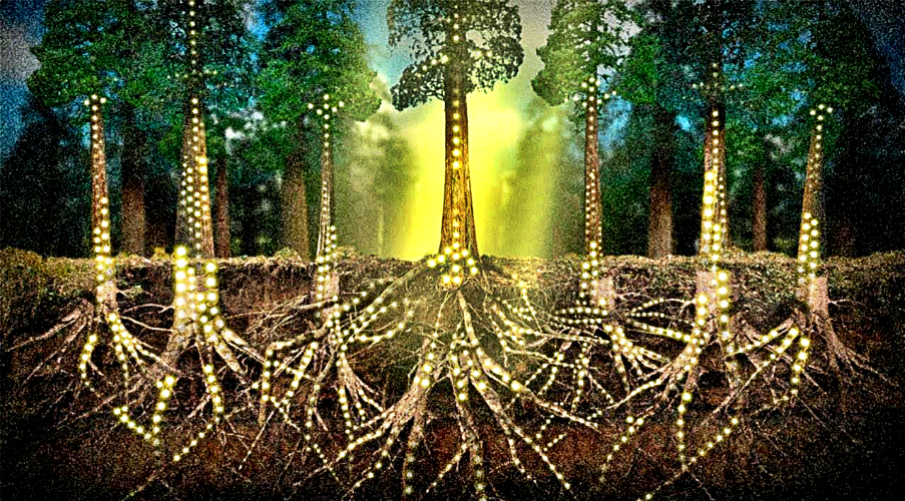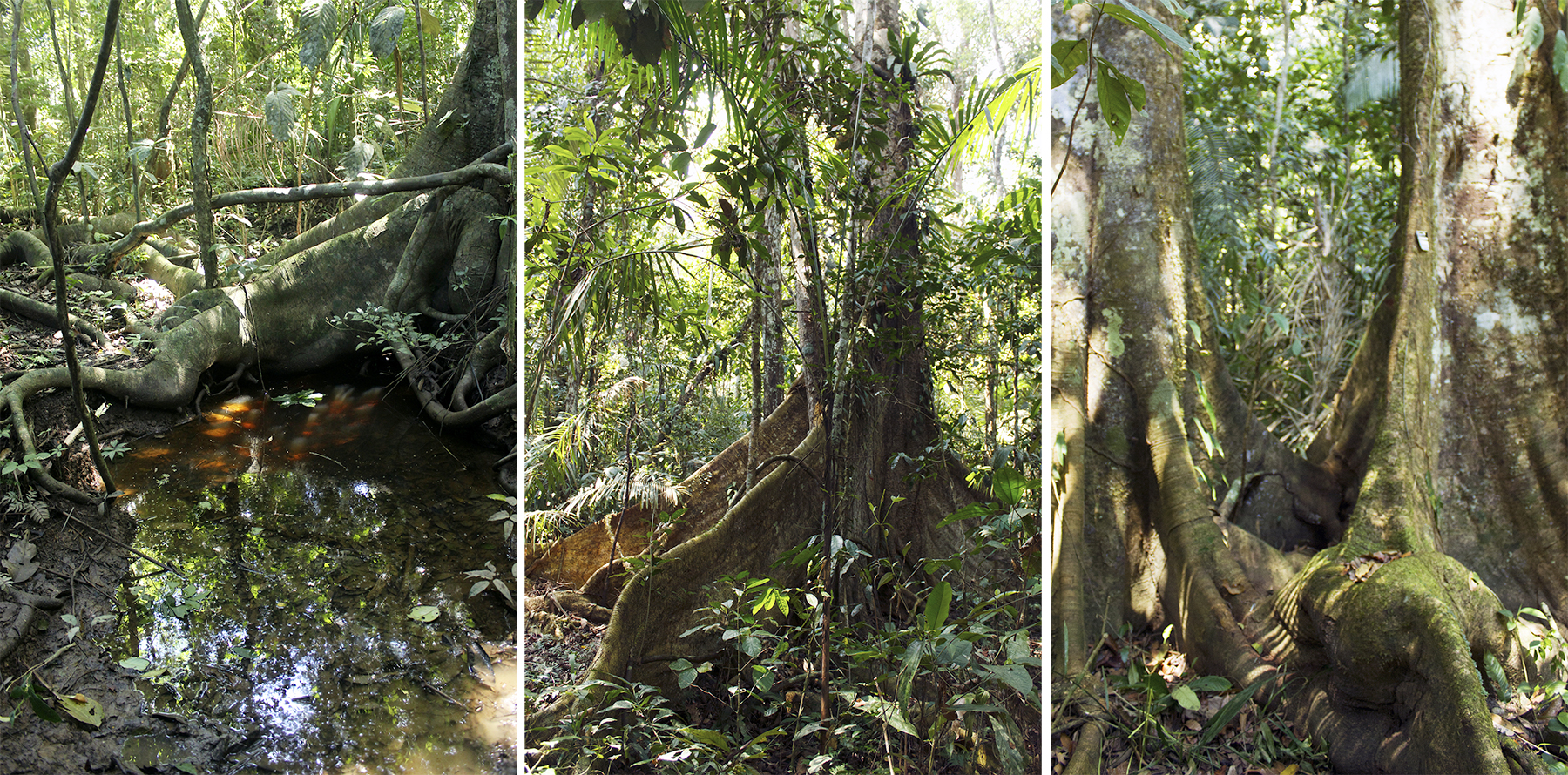Expert communicators with their own internet
Suzanne Simard, forestry investigator from the University of British Columbia (Canada), discovered the trees in a forest are interconnected by a network of roots and mycorrizha which they use to exchange nutrients.
In her experiment she marked birch leaves (Betula papyrifera) with carbon swabs (C13 and C14) and proved this carbon was transferred to neighboring Douglas fir leaves (Pseudotsuga menziesii). This same carbon marked on the Douglas fir leaves appeared on the young leafless birches during winter.
Mycorrizha
are symbiotic associations between fungi (in Greek, mykós) and plant roots (riza). The fungi filaments create gigantic networks called mycelia which transport the ground’s minerals to the roots, while obtaining carbon hydrates photosynthesized by the plant in exchange.
It’s believed this symbiosis with the fungi was crucial in the evolution of land plants when they left the oceans some 400 million years ago and had to learn now to extract the minerals and nutrients retained by the particles in the ground.
The publishing of these results became the boom in the investigation about the mycorrizha networks, which will be aptly named the Wood Wide Web –or the forest’s internet.
Nutrients aren’t the only thing that goes through these networks: biochemical and electric signals from tree to tree do as well; which would be proof of existing real communication between trees.

It’s been proved birches that had suffered severe damage from bugs sent warning signals to their neighbors via the mycorrizha networks, who in turn answered by activating the genes synthetizing defensive enzymes. The stress signal wasn’t only sent to trees of the same species, but to all those in the surrounding area.
Simard states the great trees give the young ones help via this fungi network, without which most of them wouldn’t be able to develop properly.
Meaning the oldest, biggest and most developed trees are “mother plants” and are the ones in charge of managing the resources of a community of plants via the fungi. This way, the connection is so strong the survival chances of the younger trees in a forest or jungle drops drastically when a great tree is cut down.
The investigator states the connection between plants can be compared to the synapsis between human neurons.

With these studies we can see the repercussions of indiscriminate logging in our Amazon rainforests. The selective logging of strong wood from species like the Shihuahuaco (Dipteryx micrantha) is causing the extermination of these “Mother Trees” the others wouldn’t be able to secure the species’ survival without.
Simard leaves us with this message we share: